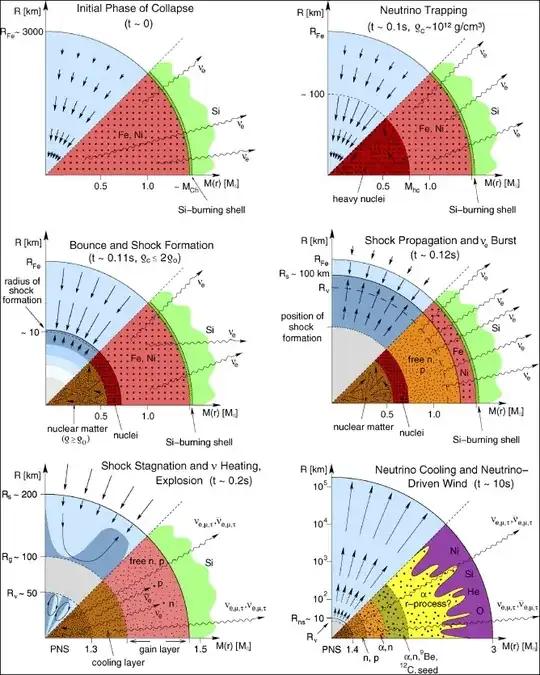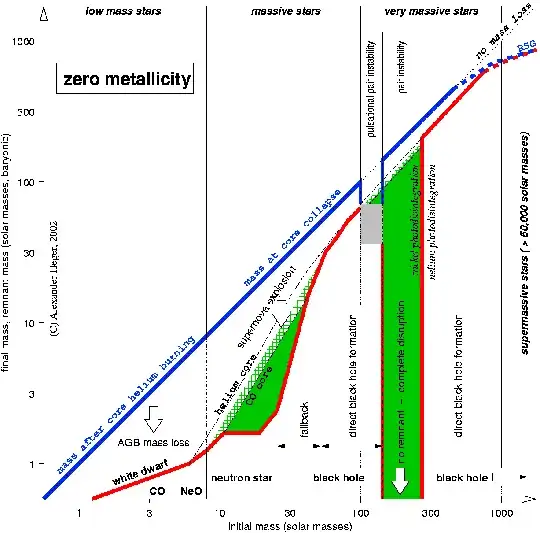Here's my theory
First, the assumptions:
- Matter is displacement of space*
- Matter moves towards higher concentrations of space**
These 2 assumptions can explain why objects in motion stay in motion**, why gravity exists, why the max speed is light-speed, +electromagnetic forces, +the strong/weak force, etc.).
How this applies to supernovae:
At the last stages before the supernova, the matter collapse is no longer in check, and so it begins collapsing to the point where there is no longer space between the matter composing the star. When that happens, matter on the surface has little to no space on the inside and a great concentration of space on the outside. Based on our assumptions, the surface matter will explode outwards at near light-speed due to this imbalance. Space will fill in to the next layer, and this process will continue downwards towards the center of the star, and BOOM...SUPERNOVA!!!
*Picture a ping-pong ball (mass) placed inside of a foam mattress (space). Space is compressed most near the surface of the mass and progressively less as you go out out
**Let's say matter moves at a velocity of ++c(ρf-ρb)/(ρf+ρb), where c is the speed of light (equivalent to how fast space can respond to changes), ρf is the average density of space in front of the mass (in the direction of travel), and ρb is the net density of space behind the mass. As the object moves, space in front responds at light-speed to get out of the way and fill in behind. In this way, the front and rear densities are maintained and constant velocities are maintained. For example, if space is on one side of a mass but none on the other, then the mass would travel at light speed. Because the mass is traveling at light-speed, the space behind it will not be able to catch up to touch the rear of the mass (which would slow it down based on our assumptions), and the space in front will just be able to keep up but not get out of the way, and so the imbalance will remain and the mass will continue on at light-speed (whiche explains why it is so hard to accelerate things as they approach c).
+requires positive/negative directional understanding of space which I won't get into right now.
++This is not for sure the equation, but represents an approximation knowing that an object at rest relative to space would have equal densities on both sides and an object with space on only one side would travel at light-speed. The true equation would be based on what would keep the relative densities of space constant for any possible velocity.

